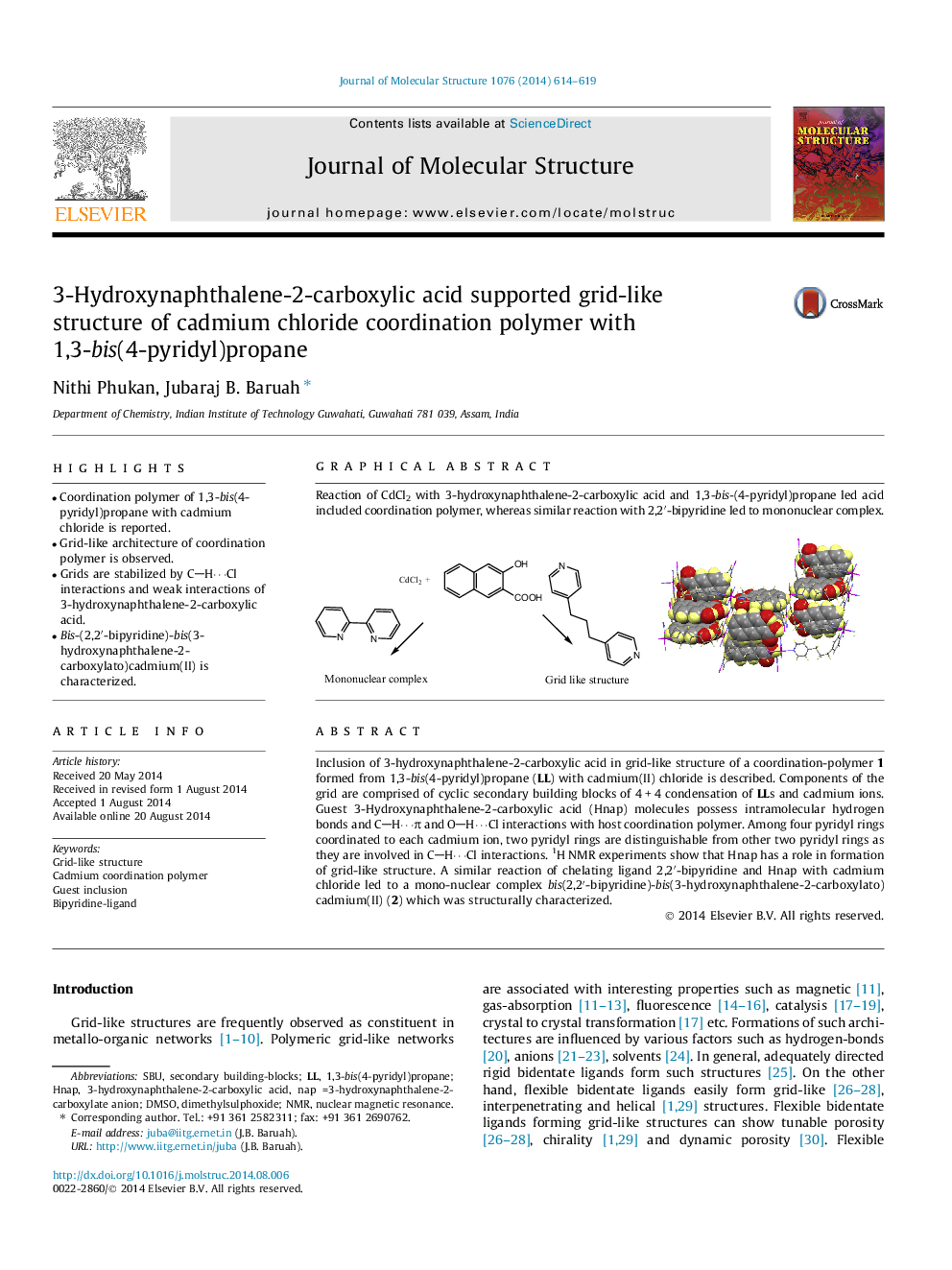| Article ID | Journal | Published Year | Pages | File Type |
|---|---|---|---|---|
| 1408497 | Journal of Molecular Structure | 2014 | 6 Pages |
•Coordination polymer of 1,3-bis(4-pyridyl)propane with cadmium chloride is reported.•Grid-like architecture of coordination polymer is observed.•Grids are stabilized by CH⋯Cl interactions and weak interactions of 3-hydroxynaphthalene-2-carboxylic acid.•Bis-(2,2′-bipyridine)-bis(3-hydroxynaphthalene-2-carboxylato)cadmium(II) is characterized.
Inclusion of 3-hydroxynaphthalene-2-carboxylic acid in grid-like structure of a coordination-polymer 1 formed from 1,3-bis(4-pyridyl)propane (LL) with cadmium(II) chloride is described. Components of the grid are comprised of cyclic secondary building blocks of 4 + 4 condensation of LLs and cadmium ions. Guest 3-Hydroxynaphthalene-2-carboxylic acid (Hnap) molecules possess intramolecular hydrogen bonds and CH⋯π and OH⋯Cl interactions with host coordination polymer. Among four pyridyl rings coordinated to each cadmium ion, two pyridyl rings are distinguishable from other two pyridyl rings as they are involved in CH⋯Cl interactions. 1H NMR experiments show that Hnap has a role in formation of grid-like structure. A similar reaction of chelating ligand 2,2′-bipyridine and Hnap with cadmium chloride led to a mono-nuclear complex bis(2,2′-bipyridine)-bis(3-hydroxynaphthalene-2-carboxylato)cadmium(II) (2) which was structurally characterized.
Graphical abstractReaction of CdCl2 with 3-hydroxynaphthalene-2-carboxylic acid and 1,3-bis-(4-pyridyl)propane led acid included coordination polymer, whereas similar reaction with 2,2′-bipyridine led to mononuclear complex.Figure optionsDownload full-size imageDownload as PowerPoint slide
